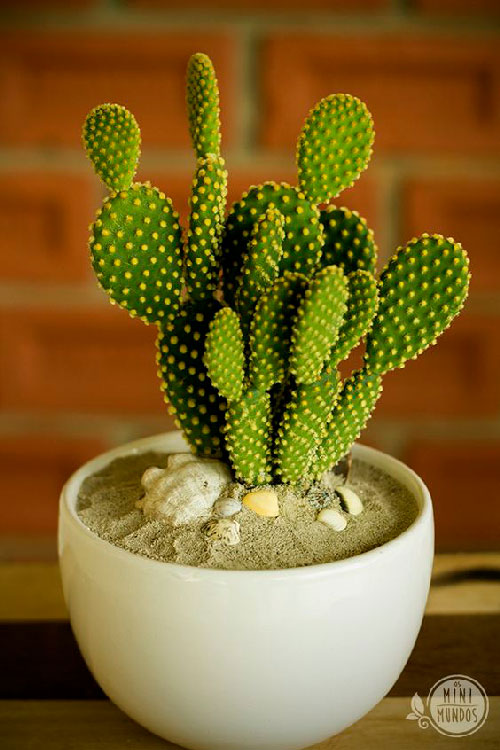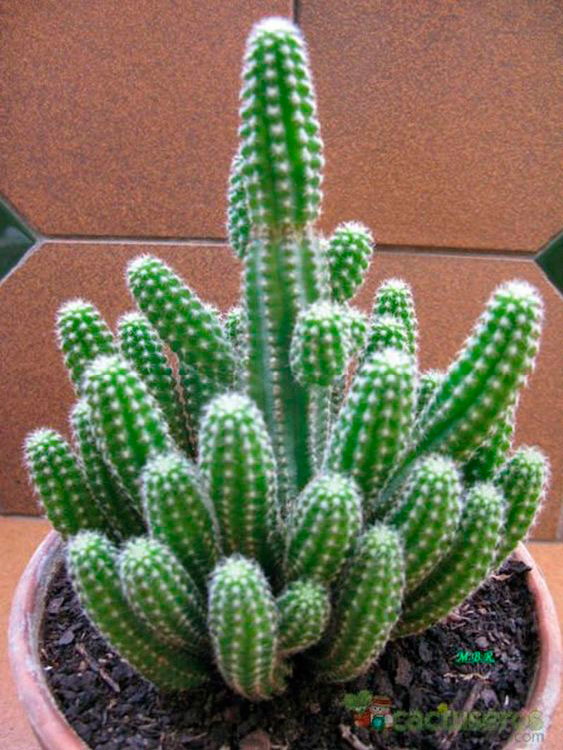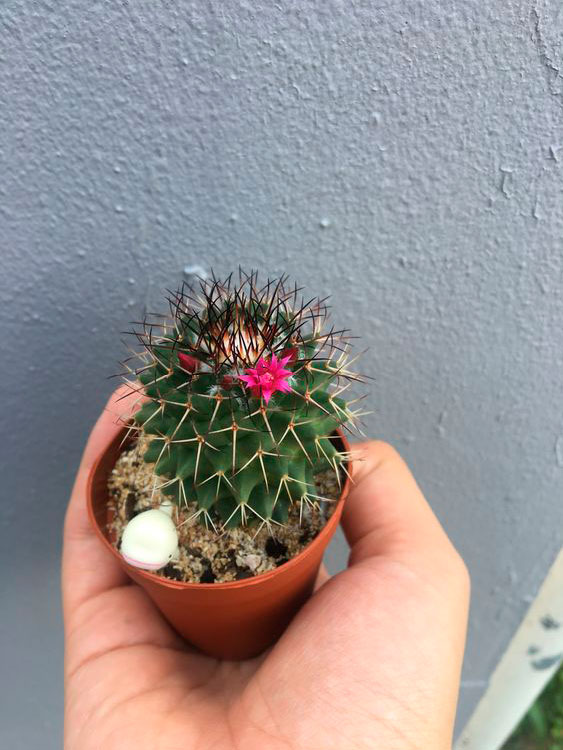Table of Contents
Increasingly present in Brazilian homes, cacti have attracted the attention and passion of several people. But you know how to care for cacti? Make them green, pretty and flowery?
Although they do not require much special care, cacti need attention so that they grow and develop properly.
Don’t you know how to take care of small and large cacti? Keep reading this article and see the most important tips we’ve separated!
Understand the characteristics of cacti

Understand the characteristics of cacti | Photo
The cacti naturally live in places with little water available and too much sunlight.
That is why it is important to try to reproduce this environment by taking care of the watering and leaving it in well-lit places.
There are several families of cacti, but all of them have no leaves, but a thick surface that may (or may not) have thorns and is usually covered with hair.
Lighting

Cactus lighting | Photo
As cacti are plants that live in the desert, it is very important to offer them many hours of sunlight.
You can raise your cacti in pots and even indoors.
But be sure to leave them in a place with plenty of sunlight.
If you don’t offer enough light, your cactus may grow uncontrollably, with thinner parts, until it dies.
Irrigation

Cactus watering | Photo
Another essential point to know how to care for cacti is in relation to irrigation.
In general, they should be watered once a week in summer and every 15 days in winter.
However, to be sure, check the substrate.
Place your finger on the ground and check if it is wet or dry, so you will know if your little plant needs more or less water.
Amount of water per irrigation

Amount of water for watering the cacti | Photo
Even following the recommendation and spacing the watering, attention must be paid to the amount of water.
After all, if you put too much water in each watering, you could kill your drowned cactus!
A mini cactus requires a teaspoon of water at each watering, so if the cactus is a little larger, use larger sizes.
And remember to water only the soil and not the whole plant.
Choose the right vessel

Choosing the right vase for your cactus | Photo
O correct vessel is indispensable in any list of cactus care tips.
The ideal is that it is compatible with the size of the species and has a good drainage system (like those with a hole underneath), preventing water from accumulating in the root of the plant, which may rot.
The most recommended are clay or clay pots.
Cactus arrangements

Cactus arrangements | Photo
The cactus arrangements are on the rise and make any environment much more beautiful.
In general, cacti live well with other species in the same pot.
But it is important that you choose species with similar characteristics, for example the succulentor various types of cacti.
Avoid the white boulders

Avoid the white boulders for the cacti | Photo
The pebbles are great for helping to drain the water well from the pots.
But be careful with which pebbles you choose, the most recommended is to opt for natural pebbles or even wooden shells.
The white marble stones are beautiful, but they release a chemical property capable of poisoning your little plant.
Have patience to see your cactus bloom

Have patience to see your cactus bloom | Photo
Some species of cacti can flourish – and their flowers are really beautiful.
But it takes a lot of patience to witness these beautiful flowers bloom.
In some cases, this will only occur after years of cultivation.
And special care is needed, such as fertilizing about two months before the flowering period with high potassium content and not leaving it in very cold environments.
Add your cactus

Add your cactus | Photo
A fertilization is important to grow any little plant – and it’s no different with cacti.
Fertilizers can be organic or not. Organic can be used every month and in small quantities.
You can find them in specialized stores or make the fertilizer at home.
Chemical fertilizers should be those recommended for cacti and it is important to follow to the letter the form of application explained by the manufacturer.
Attention to where the cactus will stay

Attention to where the cactus will be | Photo
If you’re going to grow your cactus indoors, watch your choice of location.
The best is to leave it near windows, both by sunlight and the presence of air.
But beware of the rains, especially if you’re going to leave the cactus in an outside area, such as the verandasbecause the little plant could die with the excess water.
Beware of pests

Beware of the plagues on cacti | Photo
Cactuses are generally very resistant to pests, but can sometimes suffer from them, especially mites and mealybugs.
To put an end to these pests, the best thing is to use Neem oil.
Other tips are: leave the plant in a place with plenty of sunlight and air, use an oil moistened with the oil to remove the pest, prune the most compromised areas and mix the oil with water to spray on the plant.
Some signs of pests are the spotted, withered cactus. Keep an eye on your little plant to intervene quickly, before she dies.
Beware of thorns

Beware of cactus thorns | Photo
The thorns are part of several species of cacti.
Many people, trying to make plants “safer” for animals and children, end up pulling out the thorns.
This is not a good idea because the thorns are leaves that, during the evolution process, have taken this reduced form. If you pluck them out, you’ll be shortening the life of your little plant.
Mini cactus

Mini cactus | Photo
Charming and small, the mini cacti are present in various decorative details of houses and work environments, as well as for souvenirs.
In general, they need the same care as the other species of cacti (and we quote in this content).
The difference is only in relation to sunlight.
As they are small, direct contact with the sun needs to be less, so they should be inside the house, in ventilated places and without so much direct sunlight.
Attention to the substrate

Attention to the cactus substrate | Photo
The substrate is extremely important for any plant – and you need to consider the characteristics of the cacti at this moment.
As cacti are used to dry soil, give preference to gravel and sand mixed with the substrate.
Create a 30 cm layer with expanded clay or stones and then place the mixture of sand and soil fertilizer so that your cactus develops well.
No need to be pruned

The cacti don’t need to be pruned | Photo
Caring for cacti is no mission impossible, after all they are easy to grow.
For example, there is no need for pruning, ideal for those who are just starting out in the world of gardening.
After these tips, do you already know how to take care of cacti?
Enjoy and see 15 tips on how to take care of succulents and make your garden always beautiful!











